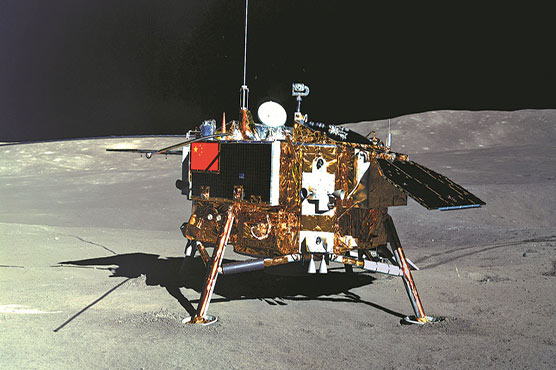China to launch Chang'e-5, Mars probes in 2020

China completed 34 space launches in 2019.
(Reuters) – China plans to launch Chang’e-5 lunar probe and its first Mars probe in 2020 as part of the country’s ambitious space program, according to a plan released Friday in Beijing by the Space Department of the China Aerospace Science and Technology Corporation (CASC).
As one of the country’s three major space missions, the Chang’e-5 lunar probe is expected to bring moon samples back to Earth, said CASC Director Shang Zhi.
China is going to send more than 60 spacecraft into orbit via over 40 launches this year, with focus on three major missions - the completion of the BeiDou-3 Navigation Satellite System, the lunar exploration and the network of Gaofen (high definition) observation satellites, he said.
China completed 34 space launches in 2019.
China’s current lunar program is divided into three phases: orbiting, landing, and returning, and the first two phases have been accomplished.
Scientists said this year’s mission will be the most critical step in the lunar probe program. It requires technical breakthroughs in four aspects in order to realize the collection of samples and bring samples back to earth.
"Automatic lunar sample collection is the first part; takeoff from the moon is the second; Rendezvous and docking on lunar orbit and sample transfer is the third; high-speed reentry into Earth’ atmosphere is the last part. The four parts have much more technically difficulties than the first and second phases of the lunar exploration," said Peng Jing, deputy chief designer of the Chang’e-5 probe with the China Academy of Space Technology (CAST).
China is also drawing up a plan for the fourth phase of the lunar exploration program, Peng said.
"We temporarily call the follow-up mission as the fourth phase of the lunar exploration program. The preliminary goal we set is to establish a lunar research base through two to three missions. In the foreseeable future, it will be an unmanned scientific research base for the long term, where people would make a short visit," he said.
China will start its exploration to the Mars by launching an unmanned probe to the planet this year after years of preparation and experiments.
The farthest distance between the Earth and Mars is about 400 million kilometers, so a probe will travel about seven months before reaching the Mars. It is expected that the probe will land on the Martian surface in 2021.
The robotic probe will consist of three parts - the orbiter, lander and rover. The rover will have six wheels and four solar panels and will carry 13 scientific instruments. It will weigh more than 200 kilograms and operate about three months on the planet.
Jia Yang, deputy chief designer of Mars probe with CAST said they install a pair of special wings for the rover.
"The intensity of solar energy will become weaker because it is far from the sun. So it needs relatively larger solar panels.
We consider both the functions and the appearance when designing the shape of solar panels. We make blue butterfly [wings] for it," he said.
In November 2019, China unveiled an experiment simulating the process of a probe hovering, avoiding obstacles and descending to land on Mars. The experiment was held on a trial ground, the largest one in Asia for test landing on extraterrestrial bodies, in Huailai County, north China’s Hebei Province.


